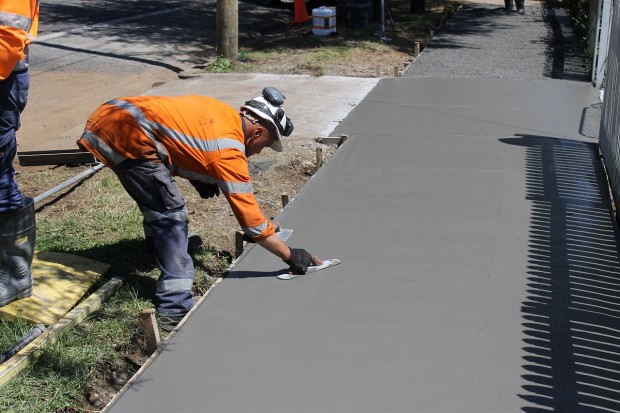When working in cold locations, the production of concrete faces challenges since internal freezing happens even before the concrete gets strengthened. Therefore, professionals working at the Engineer Research and Development Center (ERDC) of the United States Army developed methods to protect concrete buildings in cold conditions.

(Photo : Pixabay/Paul Harrison)
Techniques to Safeguard Concrete Construction in Cold Environments
By developing Additive Regulated Concrete for Thermally Extreme circumstances, also known as ARCTEC, researchers from the United States Army Engineer Research and Development Center (ERDC) have made it possible to use concrete additives readily available as an alternate method of freeze protection in freezing circumstances. To enhance the technology's usability, profitability, and practicality, ARCTEC expands upon ground-breaking research conducted at ERDC over the past several decades.
An expansion and refinement of ARCTEC applications have been the focus of the research of civil engineers Danielle Kennedy and Dr. Ben Watts of the ERDC Cold Regions Research and Engineering Laboratory (CRREL) in Hanover, New Hampshire. The difficulty of preventing concrete from freezing during winter construction is addressed by ARCTEC, which, according to Watts, is often accomplished using energy, labor, and resource-intensive solutions such as heated enclosures. Moreover, the construction process is slowed down by these technologies, which also result in additional carbon dioxide emissions and do not exploit the heat naturally emitted by concrete to its full potential.
An additional dose prescription is provided to the user by the ARCTEC approach, which considers variations in placement size and shape, mixture design, and ambient temperature. It is done to protect the user from freezing in the present conditions. One of the most critical aspects of ARCTEC is the provision of assistance to recommend the necessary dosage of additives for properly installing concrete. Different variables of placement, such as geometry, mixing proportions, ambient temperature, wind, and the time of placement, all have a role in determining whether or not this proposal is appropriate.
Since there are too many examples for general guidelines to evaluate physically, a temperature rise model was built to simulate how placement parameters affect concrete's thermal behavior at different additive dosages. For this model, inputs were gathered by conducting laboratory evaluations of concrete's thermal and mechanical behavior at various curing temperatures and additive dosages.
By integrating these inputs with maturity-informed success criteria, synthetic daily temperature profiles, variable convective boundary conditions, and a variety of placement geometries and constructions, it becomes feasible to determine the optimal dosage of the additive across an extensive array of potential placement configurations.
Challenges in Cold Weather Concreting
Due to the chemical reaction known as hydration, atmospheric conditions have a significant influence on the production of concrete. Hydration is slowed considerably when new concrete is exposed to cold weather because it causes it to cool down. Accordingly, insufficient hydration may hinder the formation of crystals during the chemical reaction, resulting in a reduction in the strength of the concrete. After reaching a 500 pounds per square inch strength, the concrete can withstand temperatures below freezing. Thus, the concrete must be maintained at 50 degrees Fahrenheit or above for 48 hours to achieve a pressure of 500 pounds per square inch.
On the other hand, when it comes to protecting concrete in a cold environment, using windbreaks, enclosures, or additional heat may be necessary, depending on the actual temperature of the surrounding environment. In addition, it could be necessary to modify the components of the concrete mixture to account for the impact of the surrounding temperature on the cure time. Therefore, the implementation of an accelerating chemical admixture, an increase in cement content, or both may be necessary to accomplish this.
Related Article: How Innovative Modular Construction is Paving the Way For Extraordinary Homes Worldwide







